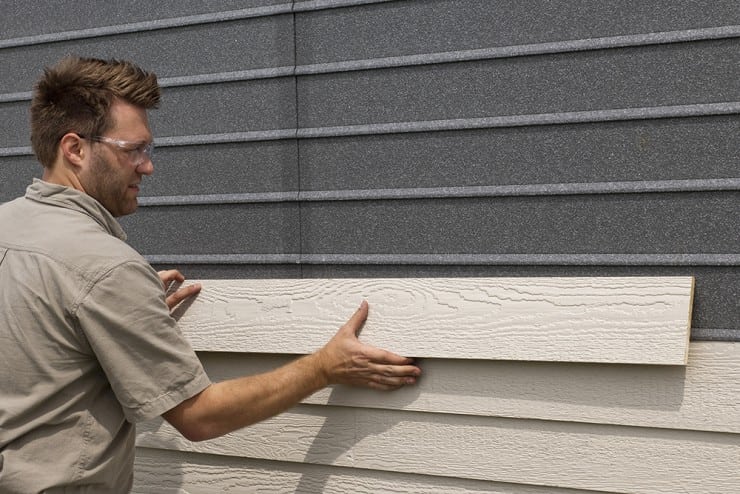5 Tips for Better Fiber Cement Siding Installation
Fiber cement siding from manufacturers like James Hardie can be a great way to enhance the appearance of a new or existing home. It is solid like real wood, can be painted in an endless number of different siding colors, and stands up to many elements.
However, installing fiber cement siding can present many challenges. If not properly installed, fiber cement can look wavy on the wall or be more susceptible to damage. You are making a big investment in your home when you decide to buy fiber cement siding; make sure you or your contractor follow these basic tips for installing fiber cement siding to ensure your siding will look its best for years to come.
-
Follow your fiber cement manufacturer's instructions
-
Properly prepare the wall surface before installing fiber cement siding
-
Use the recommended tools and materials
-
Use a siding insulation product to level the wall and align each siding panel
-
Apply any finishing materials
1.) Follow your fiber cement manufacturer's instructions!
This is by far the most important tip to remember. Each manufacturer's instructions based on their specific best practices. Deviating from their written instructions could potentially void your warranty, so following their outlined steps is critical. Make sure that you fully understand any departures that are made from your manufacturer's instructions and check with them if you are unsure.
2.) Properly prepare the wall surface before installing fiber cement siding
Before you begin installing the fiber cement siding, make sure the wall is prepared properly to avoid potential issues later. Are there large obstructions that need to be removed? Is the home improperly flashed around the windows, doors and other openings? Does your manufacturer require a weather resistive barrier (WRB)? These are just a few things that you want to make sure are addressed before starting. Refer to your manufacturer's instructions to ensure all necessary steps are taken before installing.
3.) Use the recommended tools and materials
All the elements of a siding job are designed to work together for a beautiful finished appearance and high quality performance. The type of nails, trim materials, etc. that are used can affect the fiber cement siding. Make sure that if substitute materials are used they appropriately fit within your manufacturer's installation guidelines.
4.) Use a siding insulation product to level the wall and align each siding panel
Every home has some imperfections in its walls due to the foundations and frames settling over time. When not addressed, these inconsistencies in the wall can show through new fiber cement siding. In addition to the energy savings you can achieve by adding a siding insulation product behind your new siding, you can also level out the wall and provide a consistent, stable base for installation.
Some siding insulation products like FullbackFC and Linebacker take it to the next level with built-in installation guides. These ridges in the insulation provide a guide for installing each siding panel perfectly, eliminating the need for measuring, chalk lines and guesswork required for the old way of installing fiber cement siding.
5.) Apply any finishing materials
Once your new fiber cement siding is up on the wall, the job may not be complete. Make sure that if you are required to caulk, paint your fiber cement siding or add some other finishing touch that you do it within the time frame recommended by your siding manufacturer. This will help ensure the appearance of your siding and preserve it for years to come.



